About climbing Mt. Fuji
Mt. Fuji, with an elevation of 3,776 meters, is Japan’s tallest mountain.
Not only special for its height, it has been an object of religious belief since ancient times for its graceful shape, which many of Japan’s artists have rendered, such as Hokusai Katsushika, Hiroshige Utagawa, Tessai Tomioka, and Taikan Yokoyama;there is not enough time to list them all.
Although Mt. Fuji has been loved by Japanese for a very long time, you need to be careful when climbing due to its height and severe weather. Enjoy climbing beautiful Mt. Fuji following climbing guidelines.
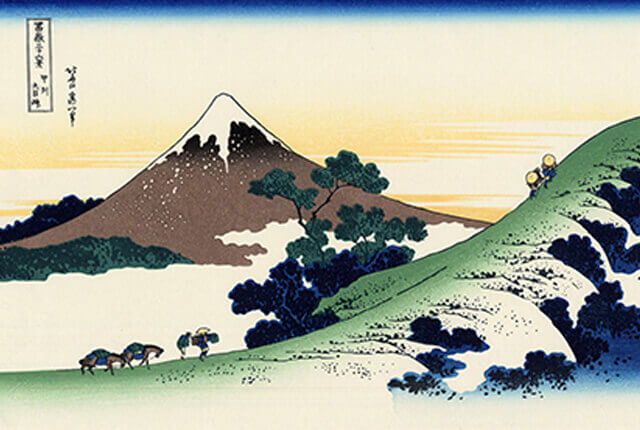

How's the walking pace?
On this tours, professional mountaineering guides will lead groups of climbers to the destination while taking stamina and pacing into account.
The pace may feel slow, but by using consideration when approaching spots on the mountain trail which exhaust a lot of stamina, fatigue does not set in as easily, and the pacing is set to help the body adapt better to higher elevations, so climbers can match the speed set by the guides to make it to the top without too much trouble.
The mountain guide in charge and the tour conductor will check everyone’s conditions and take appropriate breaks. When there is a break longer than five minutes, drink water, go to the bathroom and do some stretches.
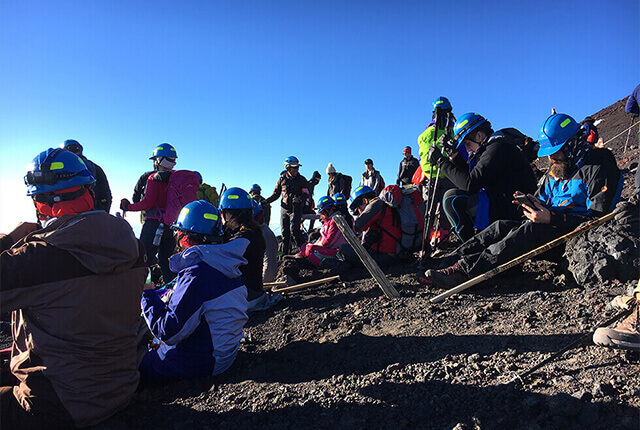
What to do to avoid altitude sickness?
The body is not getting enough oxygen. Fatigue, lethargy and headaches are some of the symptoms. The cure is returning to a lower elevation. Tell the guide or tour conductor you feel sick.
- Climb the mountain with a schedule that allows for flexibility. Getting enough sleep and refraining from alcohol are also precautions to take.
- At the fifth station, take up to to one or two hours break. Your body will get used to the altitude.
- Walk slowly and take short breaks. Aim to rest five minutes for every 25 minutes climbing, or 10 minutes for every 50 minutes climbing.
- Keep your metabolism up by frequently replenishing fluids and going to the bathroom.
- Practice abdominal breathing to get as much oxygen as you can.
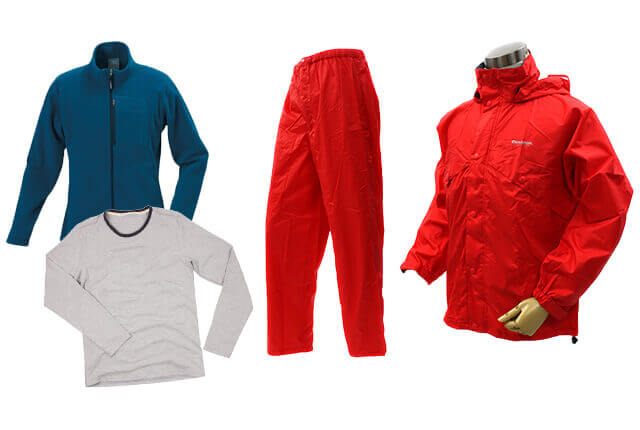
Make sure to protect against the cold!
There is about 20°C temperature difference between the base and the mountaintop. Average temperature in July are about 5°C about 6°C in August, and hit close to 0°C before dawn. Being chilled can cause illnesses. Getting hard to move gradually and may cause injury. Layered look is fully recommended for such an environment. Adjust clothes to maintain best body temperature by taking off and putting on clothes: not too hot to sweat during the climb and not too cold during the rest.
Bulky clothing, like ski wear, is unsuitable. The clothes, easy to be holded and layered is the best.
You will sweat on the hike. Bring an extra two pairs of underwear and two T-shirts just in case.
Climbing manners
Mt. Fuji itself and much of the area at its base is designated as a national park, a World Heritage Site, and a historical landmark, and protected by law. Collecting flora and fauna, taking rocks and lava stones, writing graffiti, pitching tents and setting open-air fires, and letting pets run free are all prohibited.
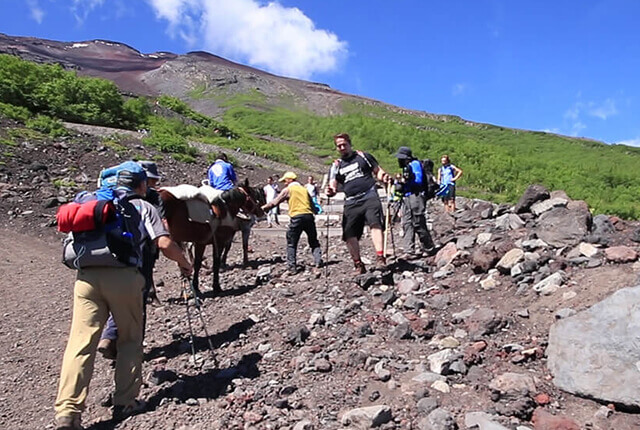
-
Who has a right of way, climbers or people coming down?
As a general rule on the narrow roads, climbers have the right of way.
-
What to know when the mountain is crowded?
It is dangerous to try to force your way past other people on a crowded trail by leaving the path; this can lead to falls or cause rockslides.
-
Where to walk?
Walking on the outside lane of the trail can cause pebbles to fall, and inconveniences other climbers. As much as possible, walk on the inside lane (side closest to the mountain).
-
What if I cause a rockslide?
If you accidentally cause one, yell “rakuseki!” so that everyone around you can hear the warning.
-
How to come in contact with animals?
The mountain paths on Mt. Fuji are designated wildlife refuges. Do not approach animals and nests, even if you see them.
-
What kind of scenery can we see while climbing Mt. Fuji?
The recommended view is not only from the summit. You can see the stunning view on the way to the summit too. For example, you can see the sea of clouds ad 7th station located at 2,700 meters sea above. Also, you can see the beautiful night view at the main 8th station Tomoe-kan.
*The climate changes rapidly in Mt. Fuji so that it may not be able to see the beautiful scenery you expect.


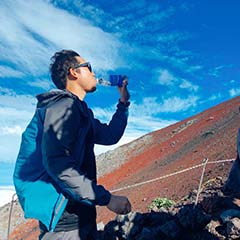 I joined WILLER's tour and climbed mount Fuji on July 12. When I started climbing from the 5 station, there were not scenic views because it was foggy. However, it was getting sunny and I could see the beautiful "Kagefuji" meaning shadow of mount Fuji when I arrived at the 8th station Tomoe-kan!
I joined WILLER's tour and climbed mount Fuji on July 12. When I started climbing from the 5 station, there were not scenic views because it was foggy. However, it was getting sunny and I could see the beautiful "Kagefuji" meaning shadow of mount Fuji when I arrived at the 8th station Tomoe-kan!